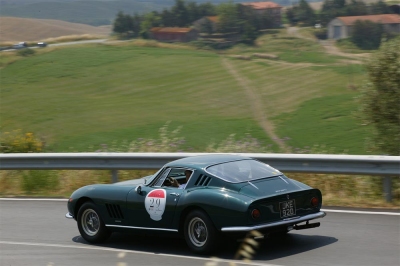SCM Analysis
Detailing
This 1966 Ferrari 275 GTB sold for $485,647 at Bonhams’ Gstaad auction, held on Dec. 18, 2004.
A quick check of an SCM Price Guide circa 2003 showed a base 275 GTB at $150,000-$200,000. A long nose model gets a $25,000 bump, so a car like the one pictured here had a book value of about $225,000 two years ago. A pretty far cry from $485k, isn’t it?
And even if we put Dirty Harry’s star power aside, the 2005 guide shows these same cars at $250,000-$375,000. Add the premium for the long nose, and we’re looking at a $400k price tag anyway. Do the math-that’s more than a 75-percent jump in price, regardless of celebrity ownership.
The point is simple: The last two years have seen values for most blue-chip collectable Ferraris soar, and the 275 GTB has been one of the biggest and most deserving beneficiaries of this trend.
The 275’s rise in value can be blamed at least partially on people buying cars to participate in last year’s factory-endorsed 275 reunion. Indeed, the increasing popularity of historic events has driven up prices of many collectible cars, and in some cases we’ve seen something akin to a buying hysteria. But the bigger story here is the slide of the U.S. dollar.
Ferraris are a world commodity, sold and purchased in many different currencies, and rapid changes in these markets have a radical effect on Prancing Horse values. The recent effect of the falling dollar cannot be underestimated, as the 30-percent slide against the Euro since 2003 means that a Ferrari offered for $200,000 then, and now priced at $250,000, would actually cost $190,000 adjusted for the exchange rate, if your currency of choice has always been the Euro.
If you’re in the market for a 275, not only are you a few years late, but you’re also faced with a broad array of cars called “275 GTB” that couldn’t be more different. There are three main variations of the 275 GTB series. The original version is referred to as a “short nose,” the second, “long nose,” and the final series is the 275 GTB/4, commonly known as the four-cam and featuring the long-nose body with subtle updates and a hotter version of the engine. Among the three variations are other differences, like steel or alloy bodies, and motors fitted with three or six carburetors. There are both competition models and a handful of spyders, and each model and variation has a commensurately different value, running from as little as $200,000 to as much as $10,000,000. As we’ve written before, if you don’t know your 275s, seek counsel with an expert.
The 1966 Ferrari 275 GTB pictured here is a long-nose, two-cam 275. When and how Eastwood sold it is a little fuzzy, but in 1988 it went to the Musée de Muriaux, a museum in Switzerland, via a Ft. Lauderdale, FL, dealer. It stayed at the museum until bought by an Ecuadorian businessman (the Gstaad seller), who left the car in Europe to use on events there. He had the engine rebuilt and the mechanicals freshened; the car has been described as exceptionally original and in excellent condition.
Although the 275 GTB sold at just mid-estimate, its $485k was a recent high for a two-cam 275 GTB. Even at this record price, the determined Italian buyer got a bargain. Good luck finding another Ferrari under $500,000 that will get you as much bang for the buck, especially in this market.
Not only will its new owner gain entry into most of the top-flight events, but the Eastwood provenance will also draw a crowd. A personable fellow can take advantage of the opportunity and make a host of new friends every weekend, between hot laps and wine tastings. And even if the new owner just stands in his garage and admires his new toy, it’s still an excellent example of one of Ferrari’s best. This price, aside from the Eastwood provenance, may be six months to a year ahead of the general two-cam 275 market, but I don’t see an end to the climbing values any time soon.
(Historical and descriptive information courtesy of the auction company.)
